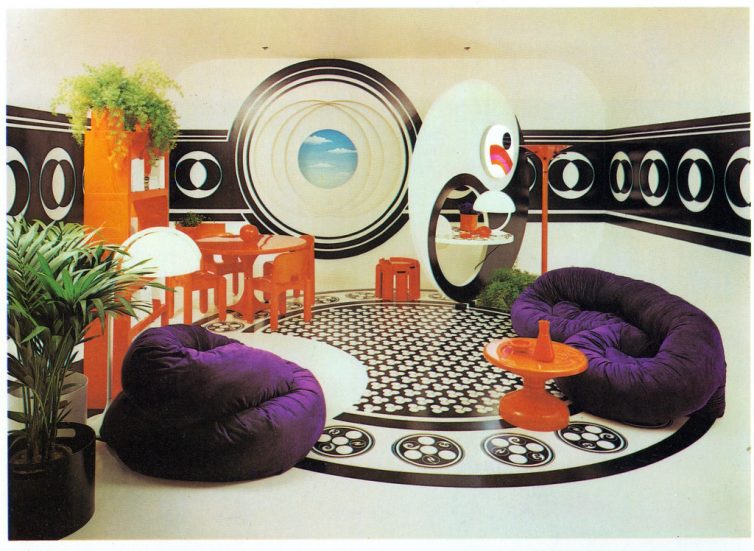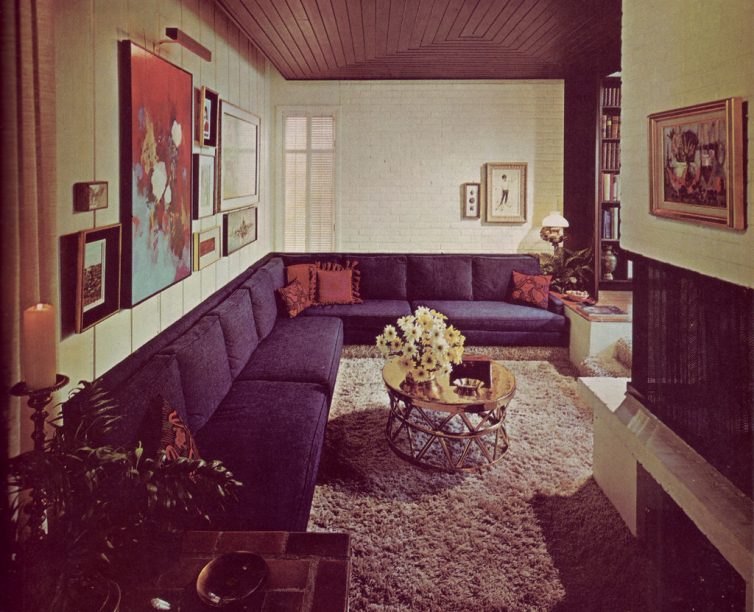A Retro Revival: Exploring The Enduring Appeal Of 1970s Home Decor
A Retro Revival: Exploring the Enduring Appeal of 1970s Home Decor
Related Articles: A Retro Revival: Exploring the Enduring Appeal of 1970s Home Decor
Introduction
With great pleasure, we will explore the intriguing topic related to A Retro Revival: Exploring the Enduring Appeal of 1970s Home Decor. Let’s weave interesting information and offer fresh perspectives to the readers.
Table of Content
A Retro Revival: Exploring the Enduring Appeal of 1970s Home Decor

The 1970s, a decade of social and cultural upheaval, left an indelible mark on interior design. This era, characterized by a rejection of traditional norms and a fervent embrace of individuality, gave rise to a unique aesthetic that continues to fascinate and inspire. While once considered dated, 1970s home decor is experiencing a resurgence, finding new life in contemporary spaces and captivating a new generation of design enthusiasts.
A Tapestry of Influences:
The 1970s witnessed a confluence of influences that shaped its distinct design language. The counterculture movement, with its emphasis on natural materials and earthy tones, played a significant role. The rise of environmentalism fueled a preference for sustainable and handcrafted items. The burgeoning global consciousness introduced exotic textures and patterns, infusing interiors with a sense of international flair.
Key Elements of 1970s Home Decor:
1. Color Palette:
The 1970s color palette was a departure from the muted tones of the preceding decades. Bold hues like burnt orange, mustard yellow, avocado green, and terra cotta were embraced, often used in dramatic combinations. Earthy browns and deep blues provided a grounding contrast, while white and beige were employed as accents.
2. Patterns and Textures:
Geometric patterns, particularly bold stripes and checkerboards, were ubiquitous. Floral motifs, often featuring large-scale blooms, added a touch of whimsy. Textured surfaces were highly prized, with woven fabrics, shag carpets, and macrame wall hangings adding depth and visual interest.
3. Materials:
Natural materials like wood, leather, wicker, and rattan were favored for their authenticity and warmth. These materials were often left untreated, showcasing their raw beauty. Synthetic materials like vinyl and acrylic also found their place, particularly in furniture and lighting.
4. Furniture:
1970s furniture was characterized by its sculptural forms and unconventional designs. Oversized modular sofas, beanbag chairs, and platform beds were popular choices. Wicker and rattan furniture, often featuring bold geometric shapes, added a touch of bohemian charm.
5. Lighting:
Lighting played a crucial role in creating the desired ambiance. Pendant lights with geometric shapes, oversized floor lamps with textured shades, and wall sconces with natural materials were common features. The use of dimmable bulbs allowed for the creation of intimate and inviting spaces.
6. Accessories:
Accessories were integral to the 1970s aesthetic. Macrame wall hangings, woven baskets, pottery, and ceramic figurines added a touch of handcrafted artistry. Vintage posters and framed prints featuring psychedelic art and nature scenes contributed to the era’s bohemian spirit.
The Enduring Appeal of 1970s Home Decor:
The appeal of 1970s home decor lies in its inherent sense of warmth, individuality, and timelessness. Its use of natural materials and earthy tones creates a calming and inviting atmosphere. The bold colors and patterns add a touch of vibrancy and personality, making each space unique. The focus on handcrafted items reflects a desire for authenticity and connection to the natural world.
Modern Interpretations of 1970s Home Decor:
Today, designers and homeowners are reinterpreting 1970s home decor in fresh and contemporary ways. The bold colors and patterns are being incorporated into modern furniture and accessories, adding a touch of retro flair to contemporary spaces. The use of natural materials is being combined with sustainable practices, ensuring that the aesthetic remains relevant and responsible.
FAQs about 1970s Home Decor:
Q: What are some common mistakes to avoid when incorporating 1970s elements into modern decor?
A: Overdoing it is a common pitfall. Avoid overwhelming a space with too many bold colors and patterns. Instead, focus on incorporating a few key elements, such as a vintage rug, a statement chair, or a patterned wallpaper.
Q: What are some ways to update 1970s furniture?
A: Reupholstering furniture with modern fabrics can breathe new life into vintage pieces. Painting furniture in a fresh color can also give it a contemporary feel.
Q: How can I incorporate 1970s elements into a minimalist space?
A: Choose a few key pieces with bold colors or patterns, such as a geometric vase or a patterned throw pillow. Keep the rest of the space simple and streamlined.
Tips for Incorporating 1970s Home Decor:
1. Start Small: Introduce a few key pieces, such as a vintage chair or a patterned rug, to see how the style complements your existing decor.
2. Embrace Color: Don’t be afraid to experiment with bold colors. Consider painting a single wall in a vibrant hue or adding a splash of color through accessories.
3. Mix and Match: Combine different textures and patterns to create a dynamic and interesting space. Use geometric patterns with floral motifs or natural materials with metallic accents.
4. Accessorize with Vintage Finds: Seek out vintage shops and flea markets for unique pieces that will add a touch of nostalgia and personality.
5. Create a Focal Point: Use a statement piece, such as a bold sofa or a unique lighting fixture, to draw the eye and create a sense of drama.
Conclusion:
1970s home decor continues to captivate with its vibrant colors, eclectic patterns, and focus on natural materials. Its enduring appeal lies in its ability to create spaces that are both inviting and unique. By embracing the era’s signature elements and reinterpreting them in contemporary ways, homeowners can create spaces that are both stylish and timeless. The 1970s aesthetic offers a reminder that design is about expressing individuality and embracing the unexpected.








Closure
Thus, we hope this article has provided valuable insights into A Retro Revival: Exploring the Enduring Appeal of 1970s Home Decor. We thank you for taking the time to read this article. See you in our next article!
You may also like
Recent Posts
- Shaping The Homes Of Tomorrow: Home Decor Trends For 2025
- Navigating The Evolving Landscape Of Home Decor Trends: A Comprehensive Guide
- Weaving History And Home: A Guide To Unique Vintage Farmhouse Decor
- The Enduring Appeal Of Wooden Duck Home Decor: A Timeless Symbol Of Nature And Serenity
- Beyond The Ordinary: A Guide To Unique Home Decor Accessories
- Navigating The Fast Fashion Landscape: Exploring Alternatives To SHEIN
- A Global Network Of Home Improvement: The Reach Of The Home Depot
- Finding The Perfect Pieces: A Guide To Home Decor Shopping
Leave a Reply